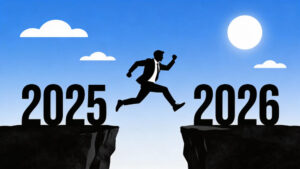Warning! The percent symbol (%) is used a lot in this article, which is known to cause headaches in some readers.

Only 32 years after Linus Torvalds sent his famous email announcing Linux to the world, Linux use has risen above 3%, all the way to 3.08% Now, ain’t that some phenomenal growth? At this rate we should hit the 10% mark sometime around 2091, just in time for the Linux Centennial Celebration.
I’m kidding, of course, about the 10% by 2091 thing. For one thing, we probably won’t even be using operating systems then. For another, we will probably have been evicted from the planet long before then. A planet-wide eviction, I understand, is performed by shutting down the life support system, just so you know. You won’t be able to breath. It’ll be like drowning in air instead of water.
But I digress. This article is about the rising use of Linux, not the coming apocalypse.
In reality, the next 3% will probably come along much more quickly. After all, desktop Linux use was at 1.71% in July 2018, so the number has almost doubled in five years.
That curve is bound to continue to point more in an upward direction going forward. Why? More and more, these days, the only people who are using desktops and laptops are people who actually need desktops and laptops, and those people tend to be reasonably tech savvy. Jane and John Doe are much happier doing their important computing on their phone, because using your McApp in a McDonalds drive-through is more than a little on the awkward side when you’re doing it on a desktop.
So, I’d say that we’ll actually hit the 10% mark by, say, 2030. That is, unless increasingly worsening storms caused by climate change have destroyed the power grid by then, in which case only those with emergency backup power will be using computers.
Sorry about getting back on the apocalypse thing again. Predicting the future isn’t as easy as it used to be.
Who Says It’s Hit 3.08%?
I can feel you Microsoft lovers out there now, quaking with rage and demanding to know who said that Linux has recently whittled Windows use down by a whole percent or so. Well, you can’t blame it on me. I don’t even know how to do the math to figure such things out. The numbers come from the geniuses (that’s what I figure they are, anyway) at Statcounter, whose job it is to figure such things out.
And even if you wanted to, you can’t blame Windows slide on Linux (Steve Ballmer, are you listening?), because you guys are down by a lot more than 3%. If you’ll remember, it wasn’t that long ago that Windows had just about monopoly power when it came to desktop use, with a market share of something like 95%. These days it’s at 69.15%, down from 82.88% in July 2018 — a slide of almost 14% in the last five years.
So, who’s been eating your lunch? Well, Linux has a percent or two of that, but it’s basically Apple, with OS X (I thought they were calling that MacOS or something like that now). Computers running the operating system for The House that Jobs Built now command 21.38% of the market, which is way up from the 5% or so that I remember them having back when Windows was the Ma Bell of home computing.
Chromebooks: Available in Stores
Ya know who’s also way up? How about Chrome OS, which didn’t even exist back in the day. Chromebooks now evidently account for 4.15% of computer use, which is a lot for an operating system that’s basically still in grade school.
When I think about it, Chrome OS might prove a point that many of us were making about Linux back in ancient times. The thinking was in those days that the reason why Linux wasn’t getting traction among everyday PC users was because the everyday PC user wasn’t someone who even knew there were other operating systems besides Windows, much less that you could buy a machine and install your own operating system on it. Even if they did, most users didn’t have to inclination or the skill to do so.
What was needed, Linux advocates said, was for affordably priced machines from mainstream brands like Dell or HP to be available in mass market electronic shops such as Circuit City or CompUSA (remember them?), sitting on display alongside Windows and Mac machines. Now, while it’s true that we now have plenty of choices for buying machines with Linux preinstalled these days, both from companies such as System76 that specialize in Linux boxes, and mainstream vendors like Dell, HP, and Lenovo who pay the rent selling Windows machines, few if any of these preinstalled Linux boxes are reasonably priced and none of them are available off-the-shelf at your local Best Buy, Walmart, or Target stores — or wherever else people go to buy computers these days.
Do you know what is available at those stores that isn’t running Windows or MacOS? Chromebooks, with most priced in the $250-$500 sweet spot for casual users or students just needing something to get them through school. People are buying them, even though they’re not running Windows, meaning they might have to learn to do some tasks a little differently than they’re used to, which was also something people used to say was a stumbling block to Linux adoption.
How many people are buying Chromebooks? According to Statista, in 2022 laptops running Chrome OS accounted for 12.3% of all laptops shipped worldwide. In 2021 the number was 15%.
So yes, we were right back in the days when most of us were connecting via dial-up and colo data centers were bragging about having T1 lines. If Target were to display mid-to-low priced laptops or desktops with an easy-to-use Linux distro like, say Mint or Elementary preinstalled, people would be buying them and Linux would be seeing usage rates above 5%.
The Suspicious ‘Unknown’ Catagory
The category that is most interesting, from a perspective of Linux’s low usage numbers, is the ‘Unknown’ OS category, which I’m assuming means “we don’t know what the frack operating system this person is running” — a category that, according to Statcounter, logs-in at 3.23%, or 0.15% higher than Linux.
Now, I’m no professional researcher (even though I pretend to be one on several websites), but I figure that if real researchers don’t know what operating system a machine is running, then it must either not be identifying itself (like to gain access to a platform that won’t “doesn’t” support Linux, but which supports Linux fine if it doesn’t know that the connecting machine is running Linux) or it’s identifying itself as something the researchers never heard of — like maybe some obscure Linux distribution (remember, to a researcher raised in the world of Windows and Macs, any Linux distro that’s not Ubuntu might be considered obscure).
I think you might see where I’m going with this. If not, I’ll explain.
Let’s say that two-thirds of the computers in that “Unknown” category are some unrecognized form of Linux. That would bring Linux’s share above 5%, which is higher than Chrome OS’s current numbers. Therefore, in the power vested in me by a piece of paper I got once from some fake church, I hereby proclaim that two-thirds of the OSes in the Unknown category are actually Linux, and that Linux actually has a larger global desktop presence than Chrome OS.
See how easy that was? Just don’t examine my logic too closely and you’ll be fine.
Christine Hall has been a journalist since 1971. In 2001, she began writing a weekly consumer computer column and started covering Linux and FOSS in 2002 after making the switch to GNU/Linux. Follow her on Twitter: @BrideOfLinux








Hello Christine,
I read your article, and I must admit that the number of desktop Linux systems is not what I would have hoped for in the (over) 25 years I have been following it.
However, I do have some questions about your reporting. Is your 3% based on installed base, or new systems being shipped? Installed base, quite frankly, is less interesting than new systems being shipped. And how exactly is it measured? I tried looking at some of the reports you mentioned, but they wanted me to register, and even when I did they still kept me from the meat of the report because they wanted me to pay for a more “professional” account.
You and I may remember when Bob Young of Red Hat tried to do measurements of desktop Linux usage and how complicated it was. Dealing with “shipments” was not practical in those days because vendors did not pre-install and store owners did not want to give up the shelf space to Linux (or even Apple) because 9 out of 10 people that came in the store wanted MS Windows and Linux people would just buy a machine with Windows on it and install Linux afterwards.
Then Bob tried to get statistics on Browser usage from websites, but that had flaws too.
Finally some Linux was installed on machines that had been retired by Windows users, or had support dropped by Microsoft, and those did not show up that much either.
You did mention phones used by most people as a “desktop”, but I do not remember that you mentioned Android (linux based) outselling 70.89% to 28.36%, and the phone market (as you did allude to) is outselling “desktop/laptop PCs” so if you look at OS shipments worldwide and lump in Android with Linux, Gartner gives a slightly different picture, that Android/Linux has over 56% of the market, more than all the other operating systems COMBINED.
Finally, over the years I always heard that “I would love to use Linux, but…GAMES”, and I think that the work that Valve has done with Steam and Steam Deck (my husband has a Steam Deck and uses it religiously, even more than all his other consoles) may help to swing the “I need my game fix” market.
Recognizing that I am not your average desktop user, I will say that I have *never* used a Microsoft or Apple product, and I seem to do all of my work just fine.
Most studies of OS usage is done by analyzing data from watching internet traffic. As you know, there’s absolutely no way of knowing the installed base when it comes to desktop Linux as the overwhelming majority of Linux users install the operating system themselves. Like you, I wasn’t interested in paying any money to find out Statcounter’s methodology. I’m sure they’re accurate to the degree that it matters.
The fact is that exact figures for a user base for any OS, but especially for Linux and BSD, is hard to come by and you have to use measures such as web traffic on DistroWatch or observations gathered from folks like Google that hoover-up such information, is one reason why I kept the article light and humorous. None of these figures should be taken too seriously.
I pretty much stayed out of the phone end of things in this article on purpose, for a couple of reasons, but mainly because my interest here was on the desktop — not mobile nor IoT devices. Also, from where I sit, I don’t consider Android or ChromeOS to be desktop Linux distributions, although both take advantage of the Linux kernel. Most people, when they say Linux, they mean traditional Linux distributions, or something that RMS would like for you to call GNU/Linux.
Both Android and Chrome are developed outside of the ecosystem that produces traditional Linux distributions and are mostly not compatible with traditional Linux distros. The notion that Android is, of course, not compatible because it’s designed for phones doesn’t hold water with me. I have a mobile device, an old Nexus 7 SE tablet that I bought new many years ago, that’s now running UBPorts, which is a continuation of Ubuntu’s old mobile OS, Ubuntu Touch. It is in every way compatible with Ubuntu-based distros, such as Linux Mint, my distro of choice. I can use apt to install software on it.
Oh…and I totally agree with you about Valve. I think that because of Valve and Steam, that Linux is on its way to becoming the platform of choice for gamers.
As always, really nice talking with you maddog. We absolutely need to meet in person someday. 🙂